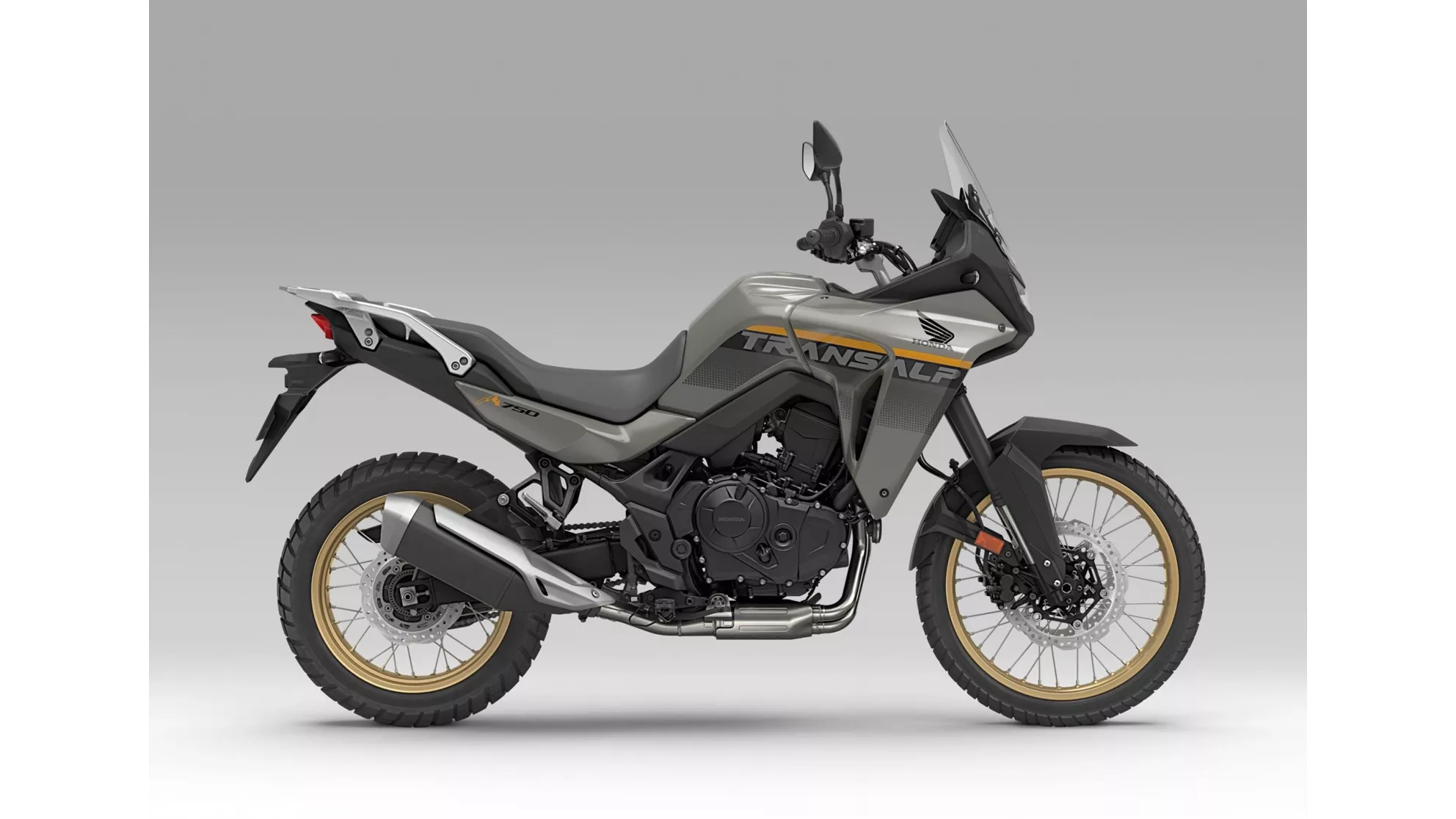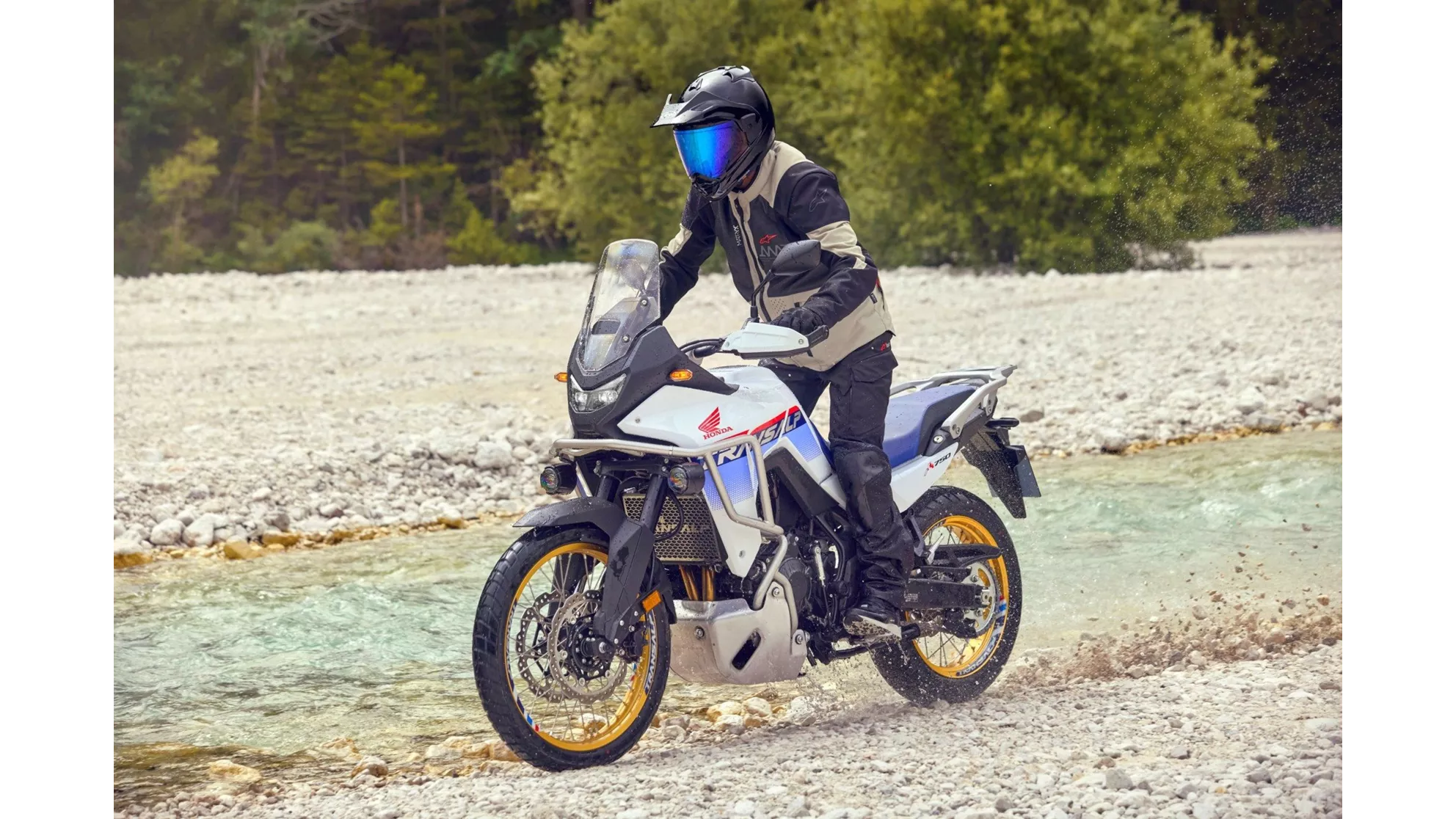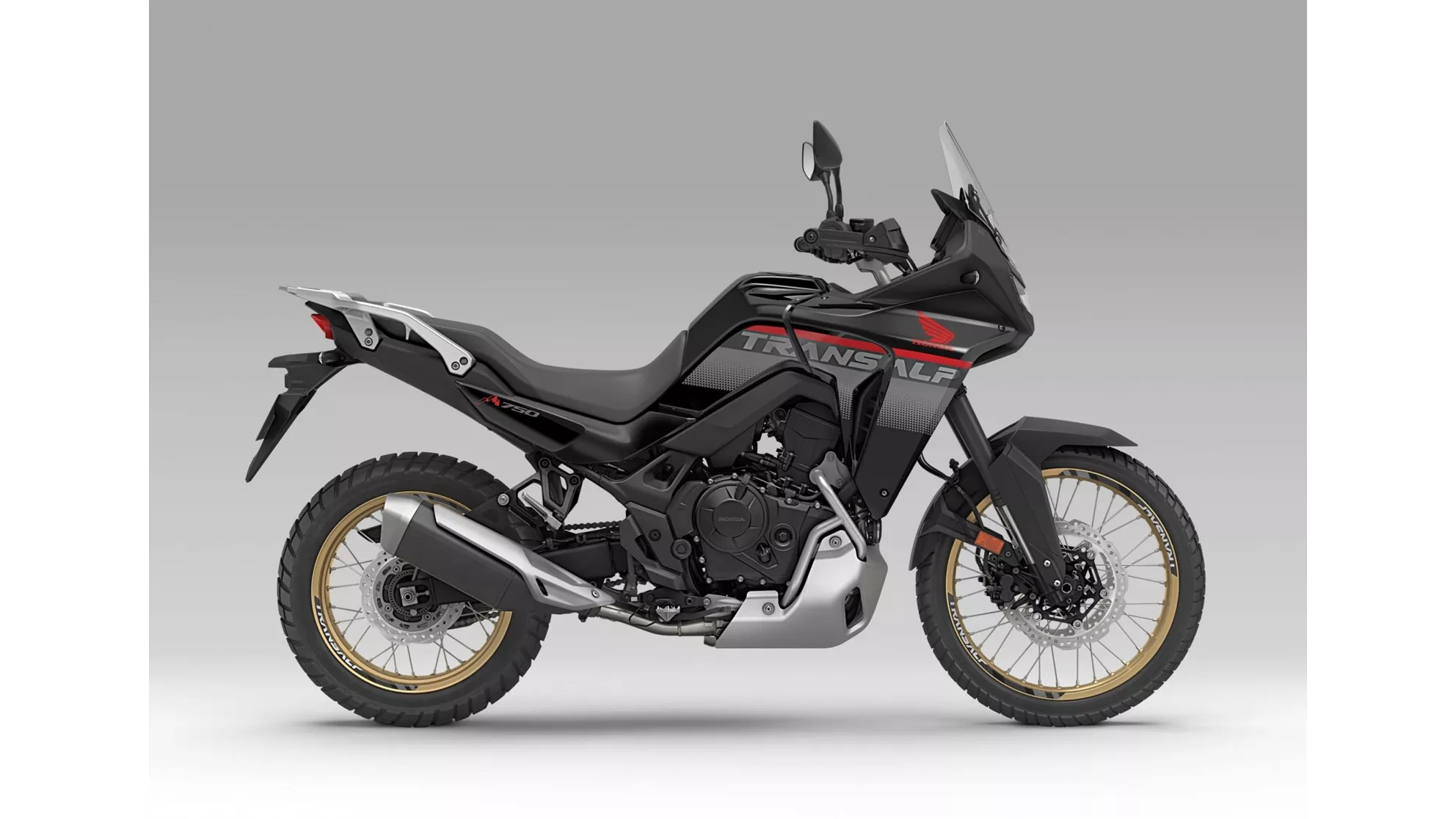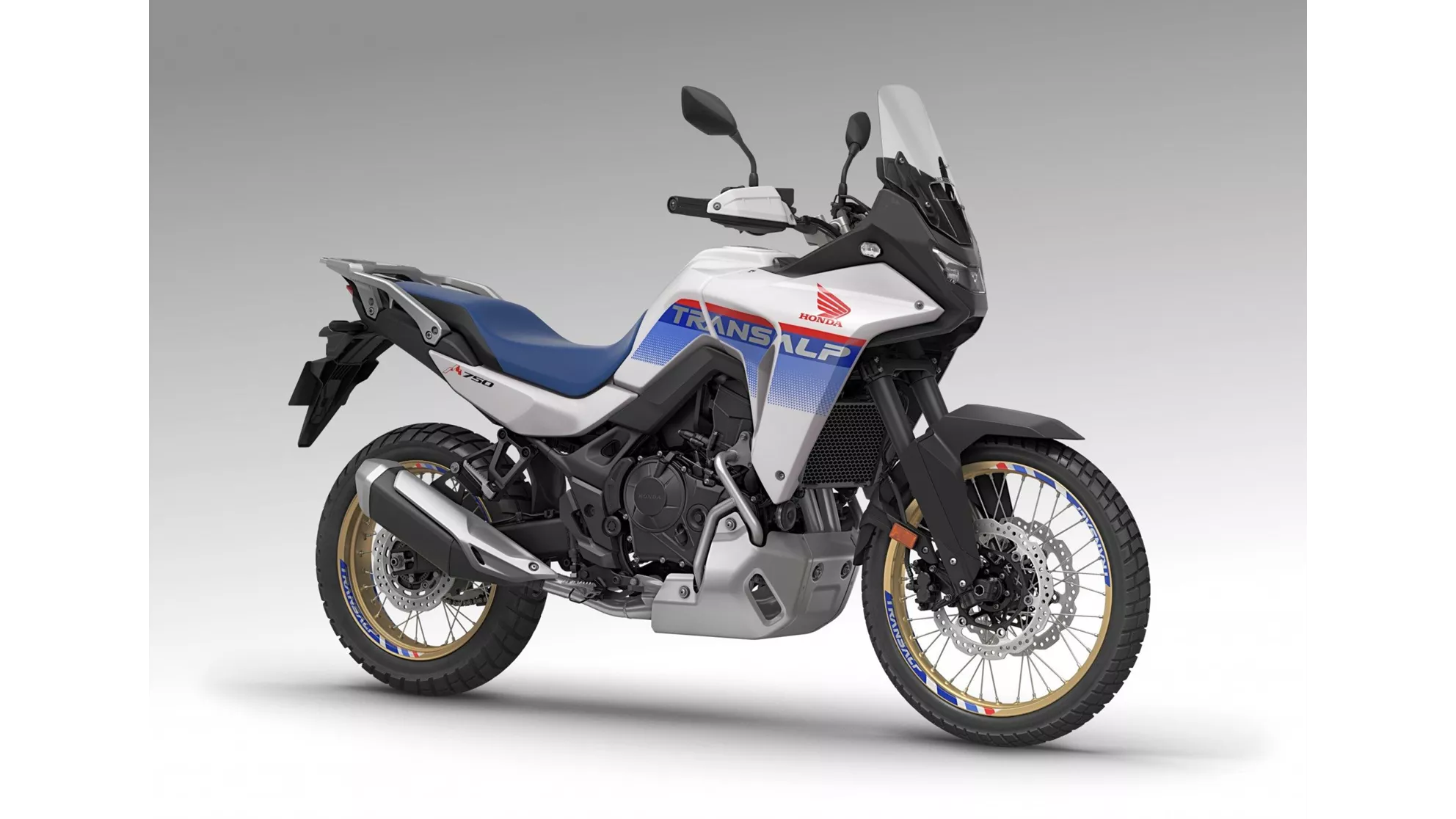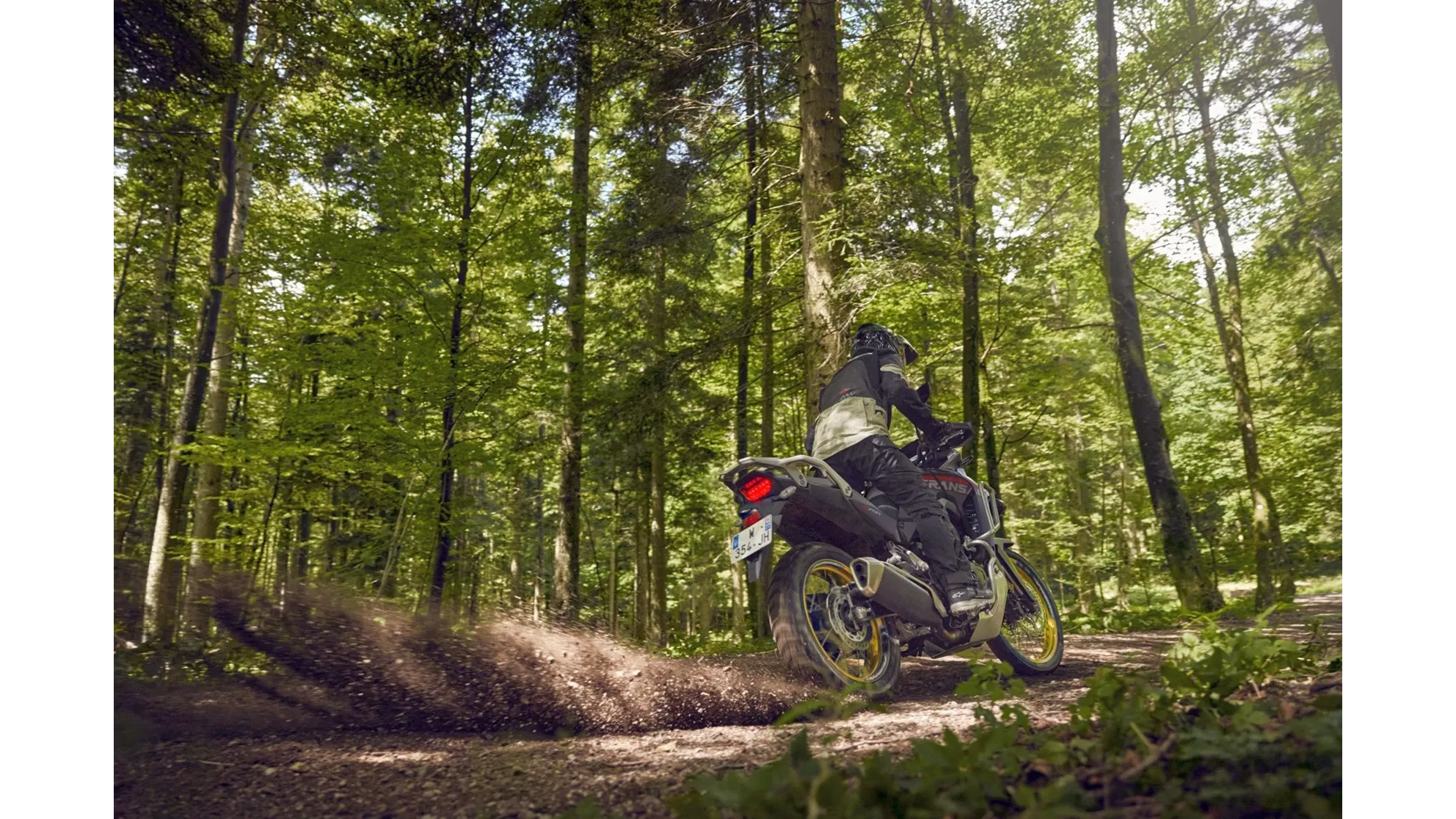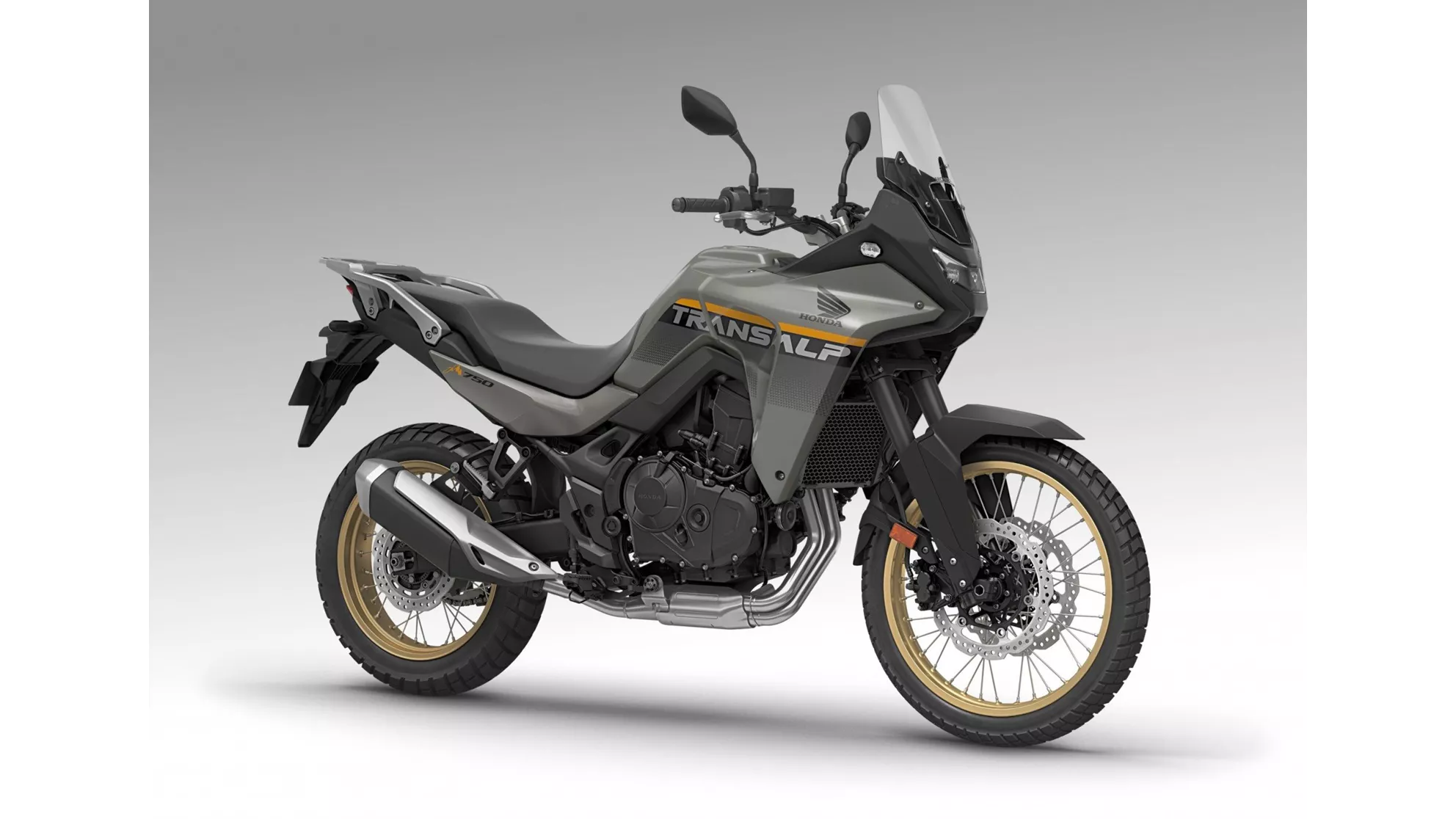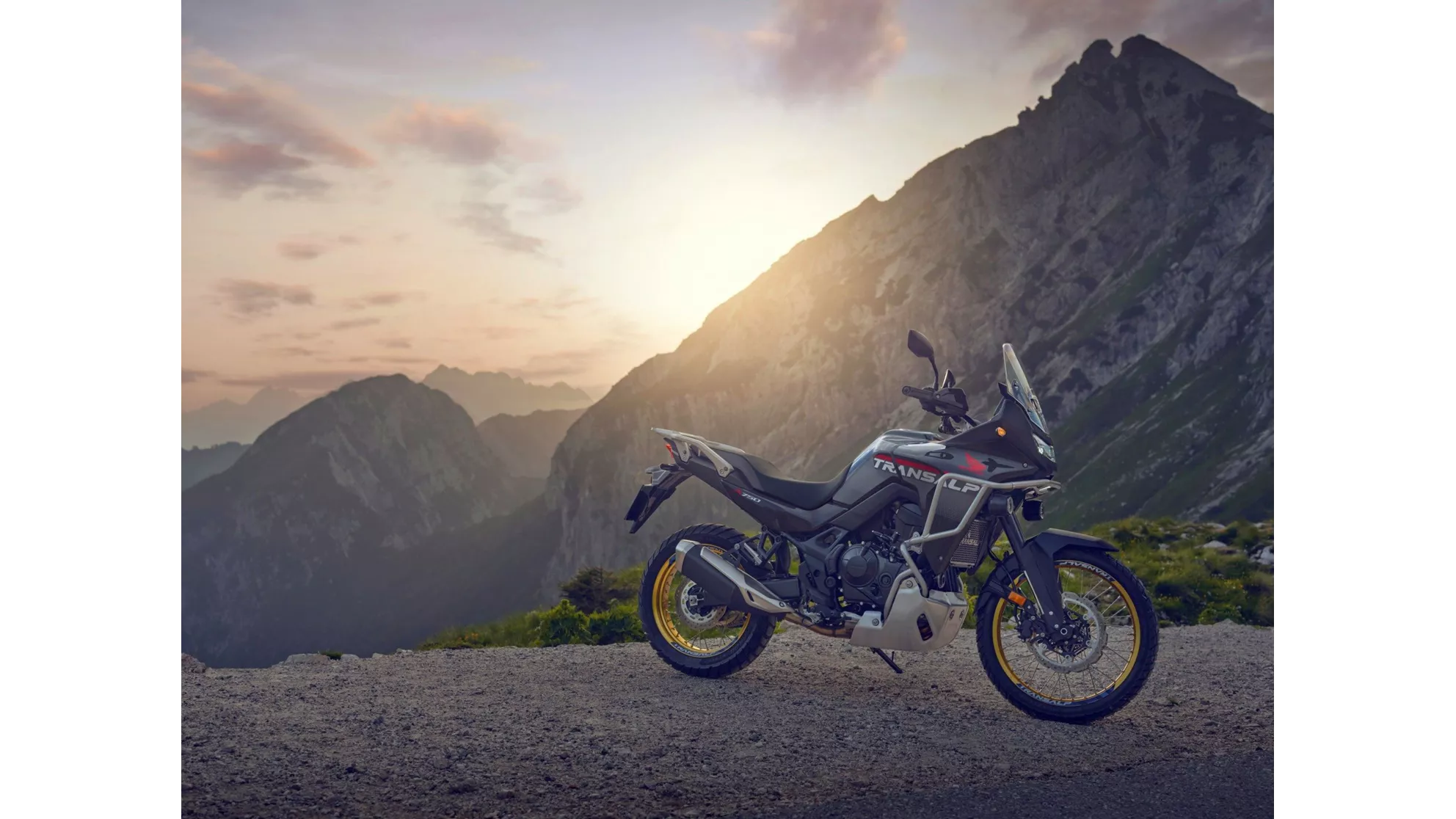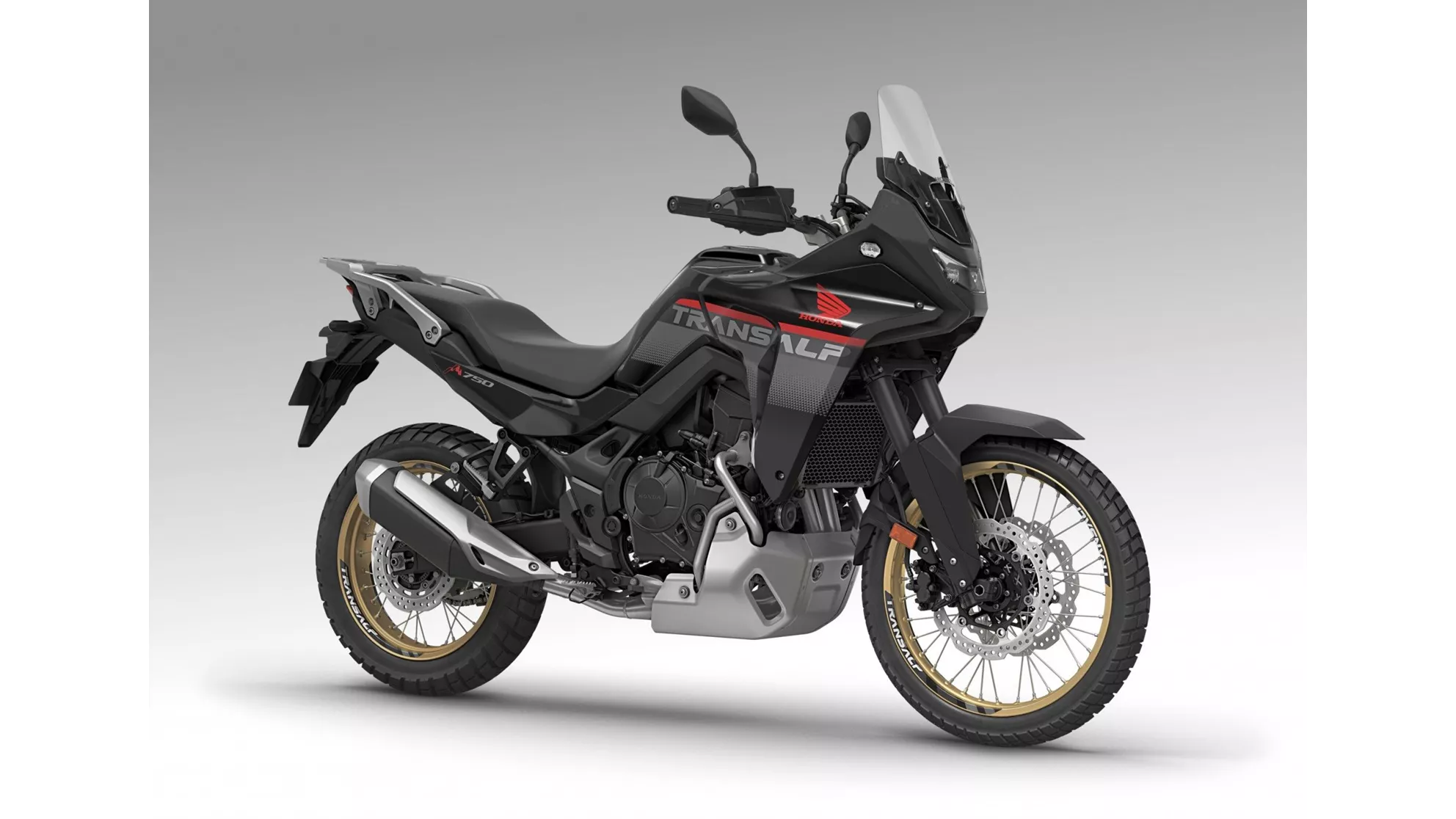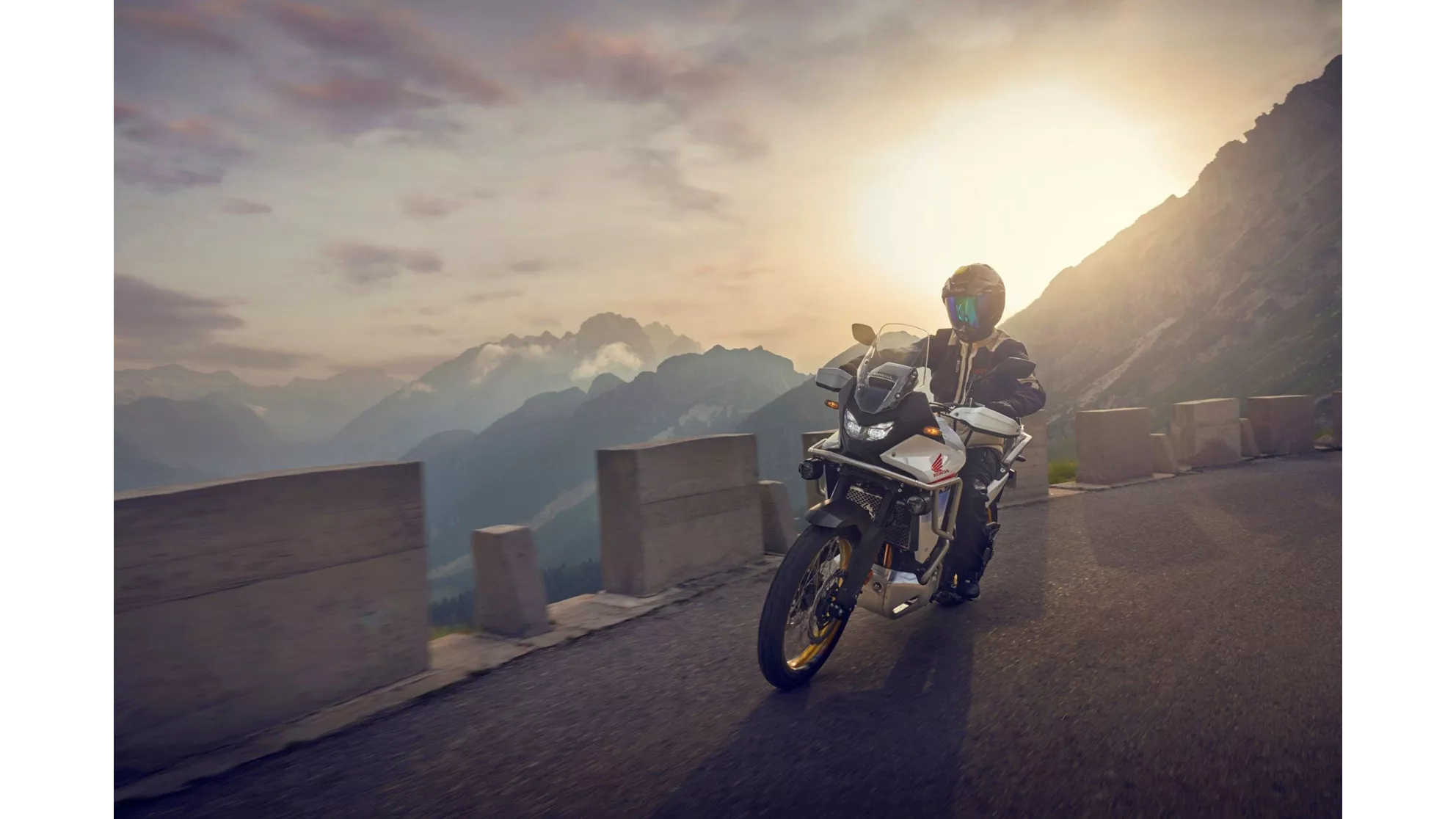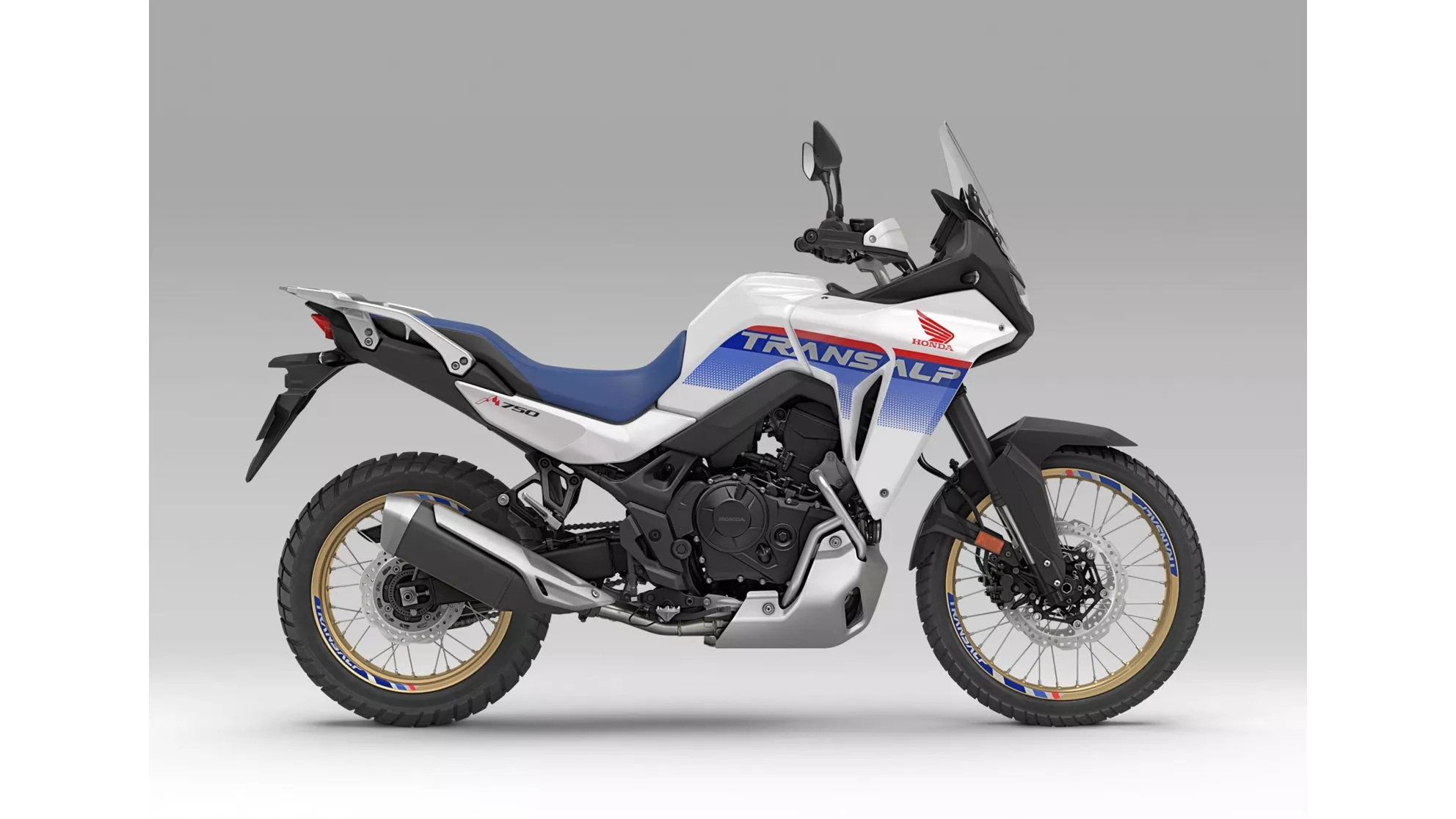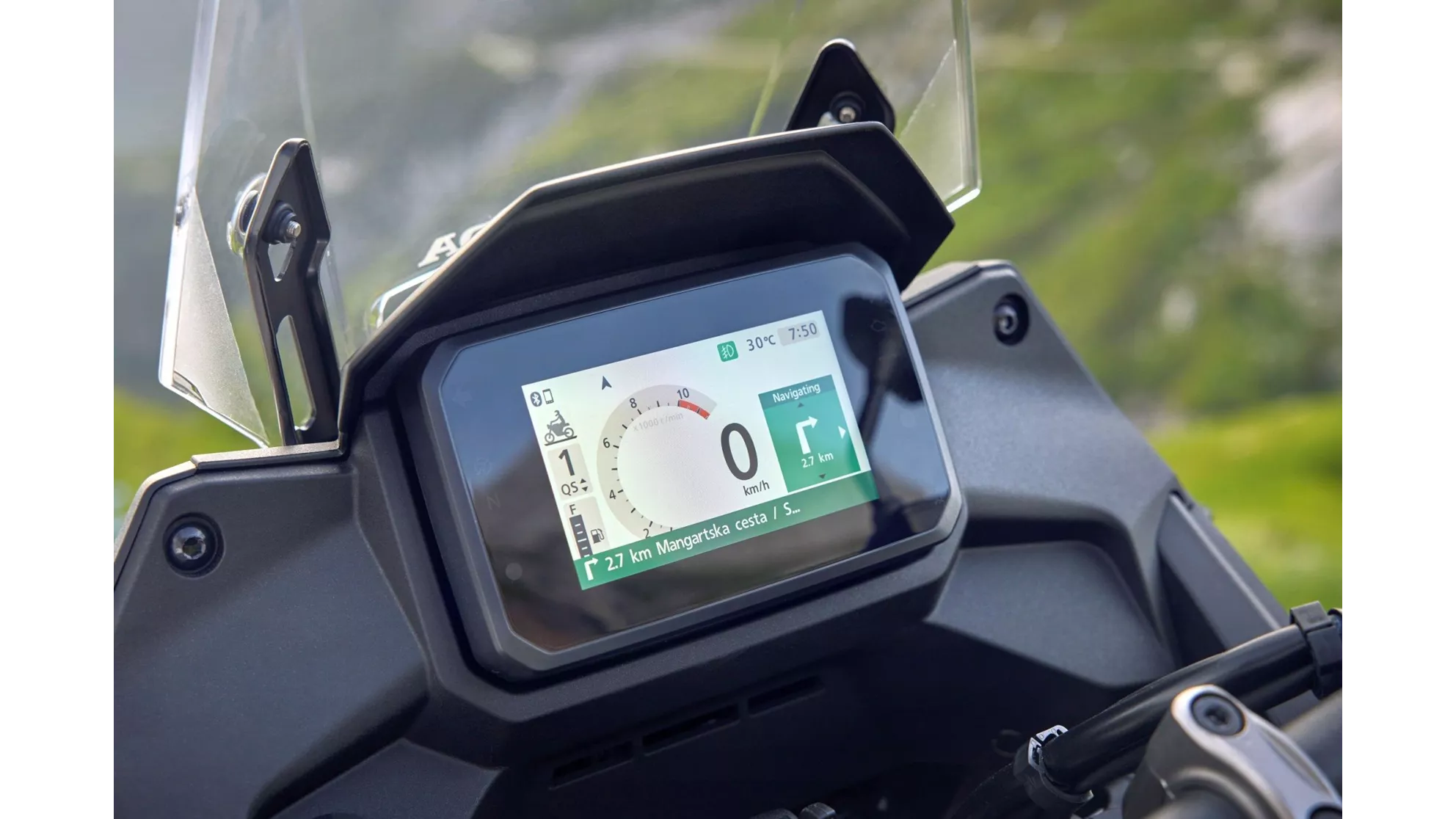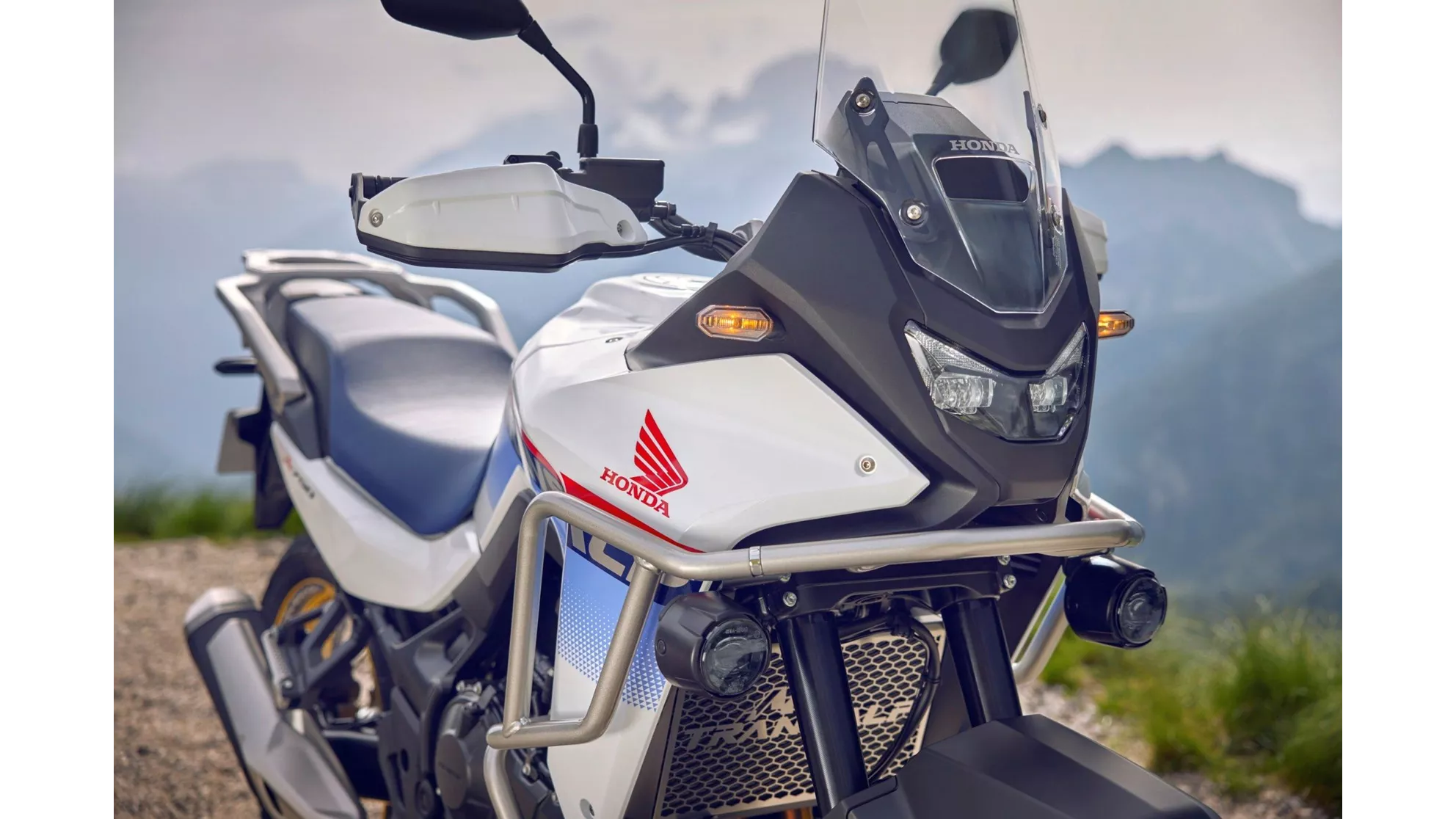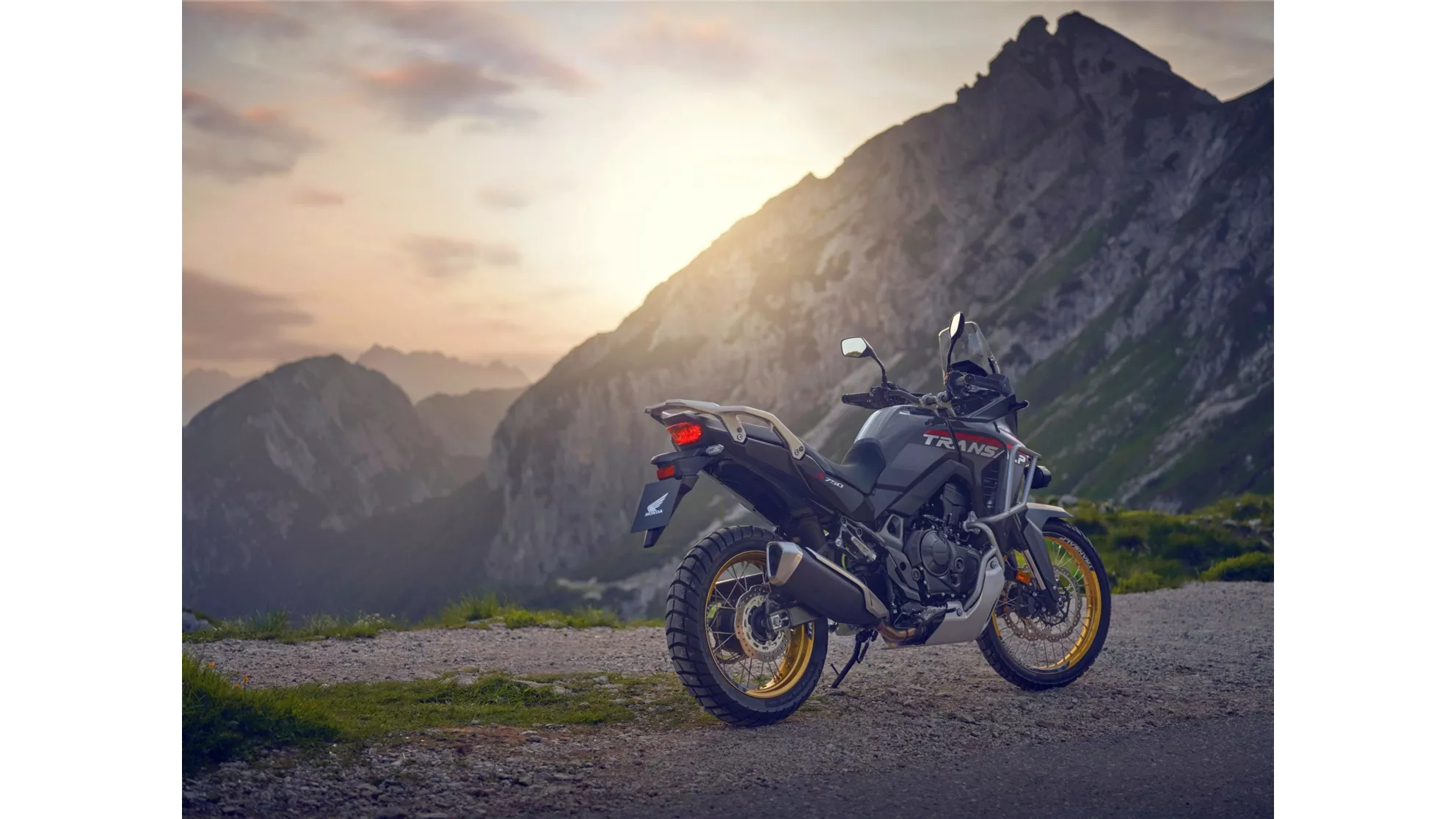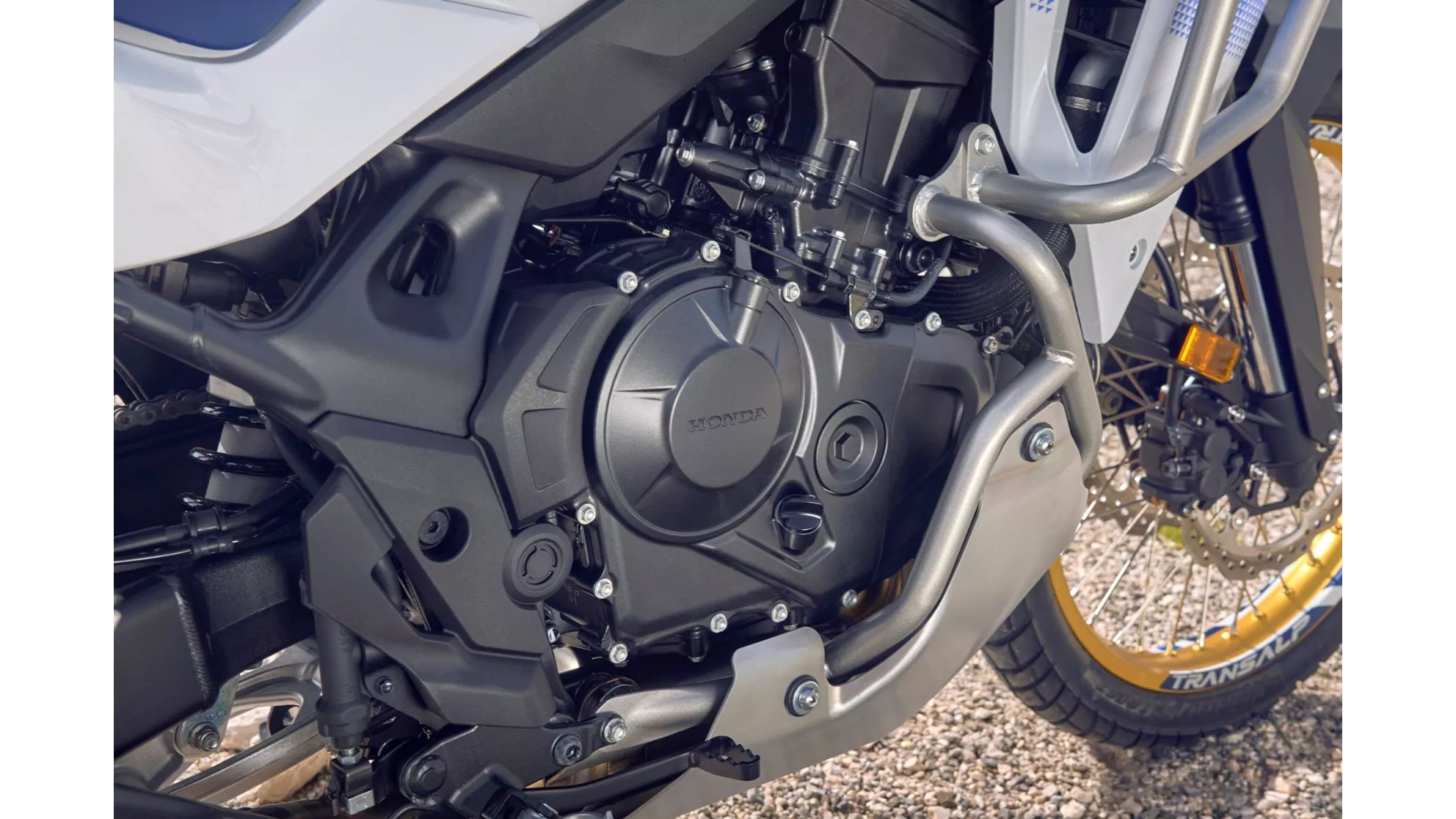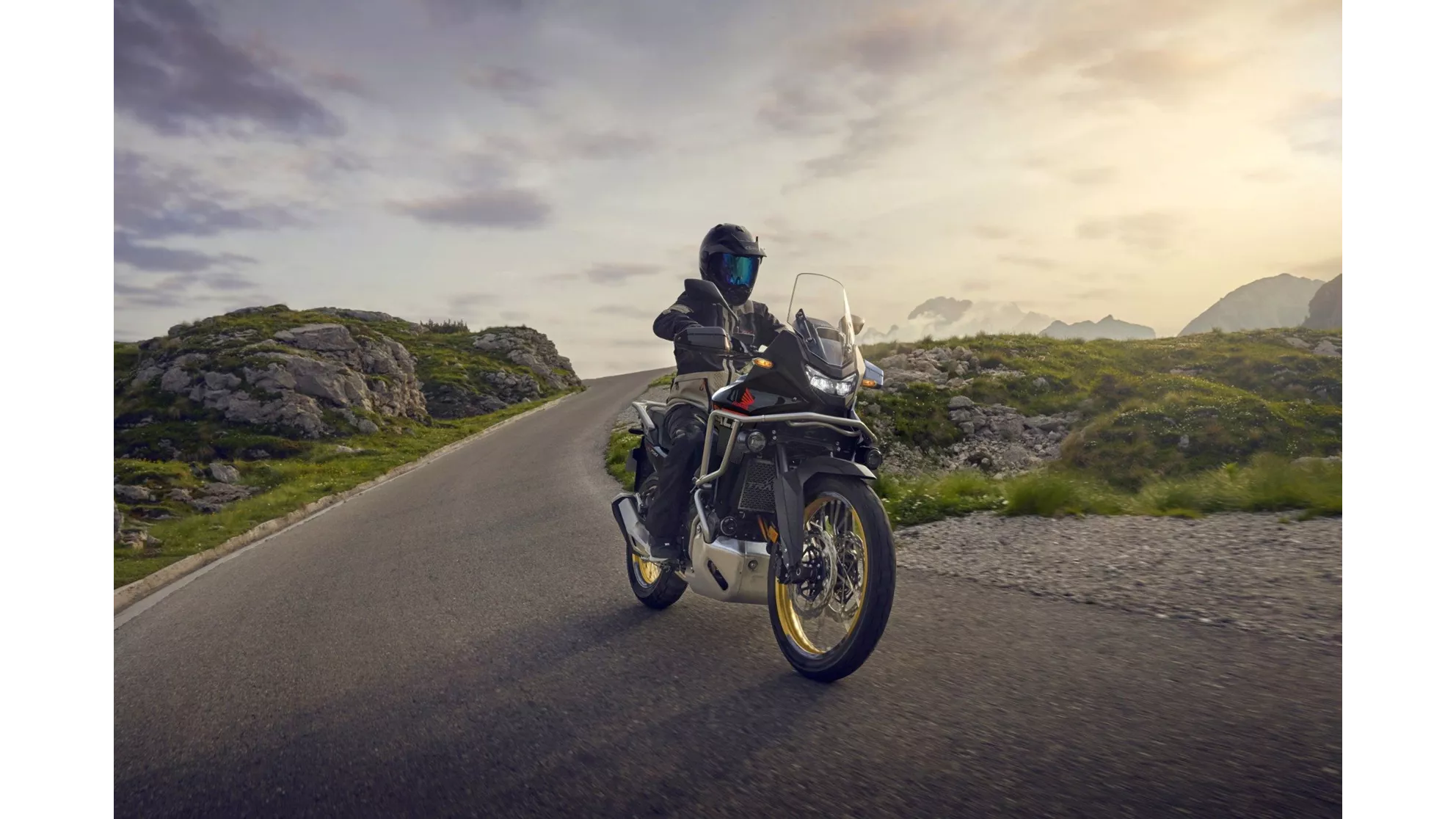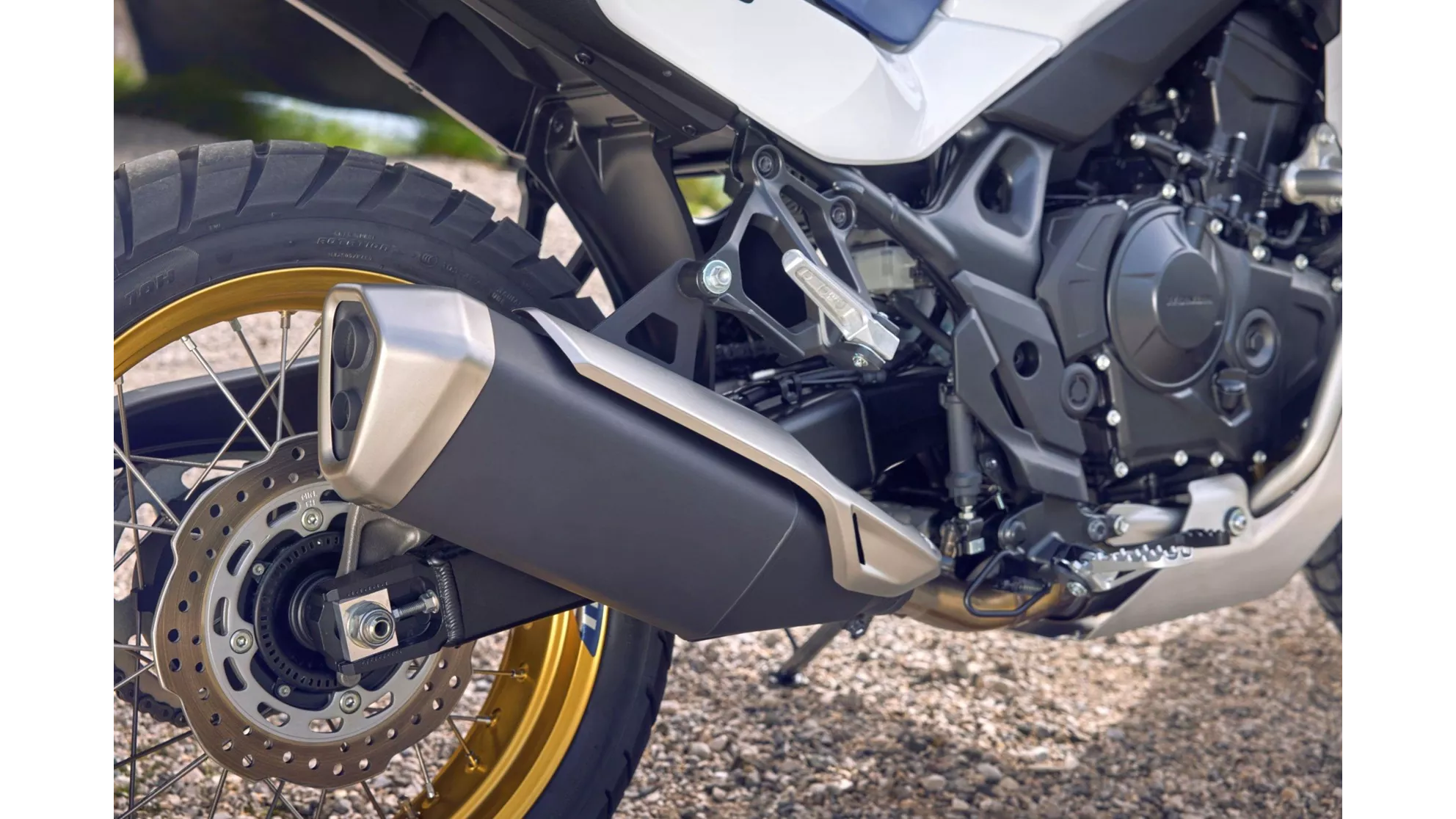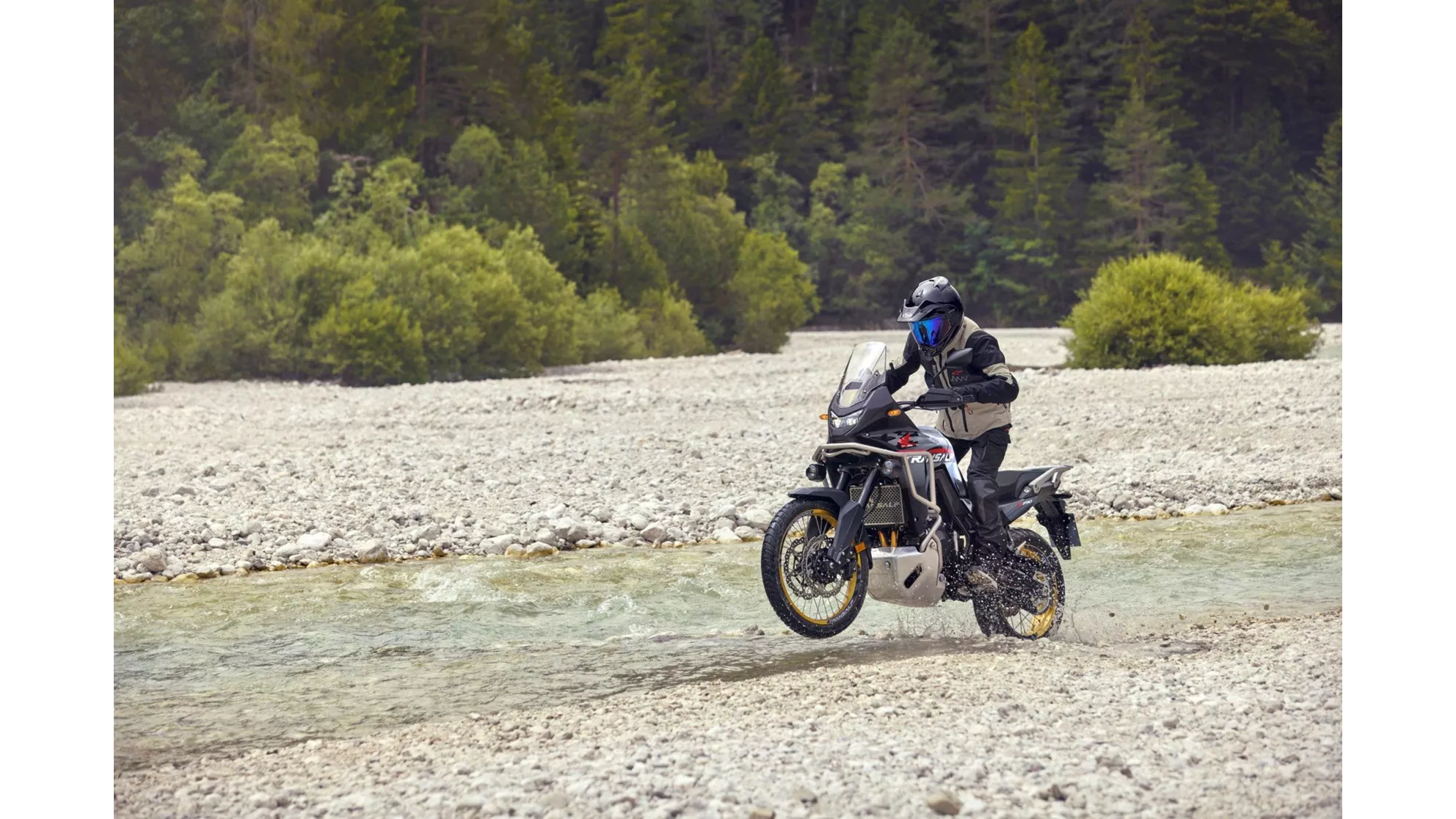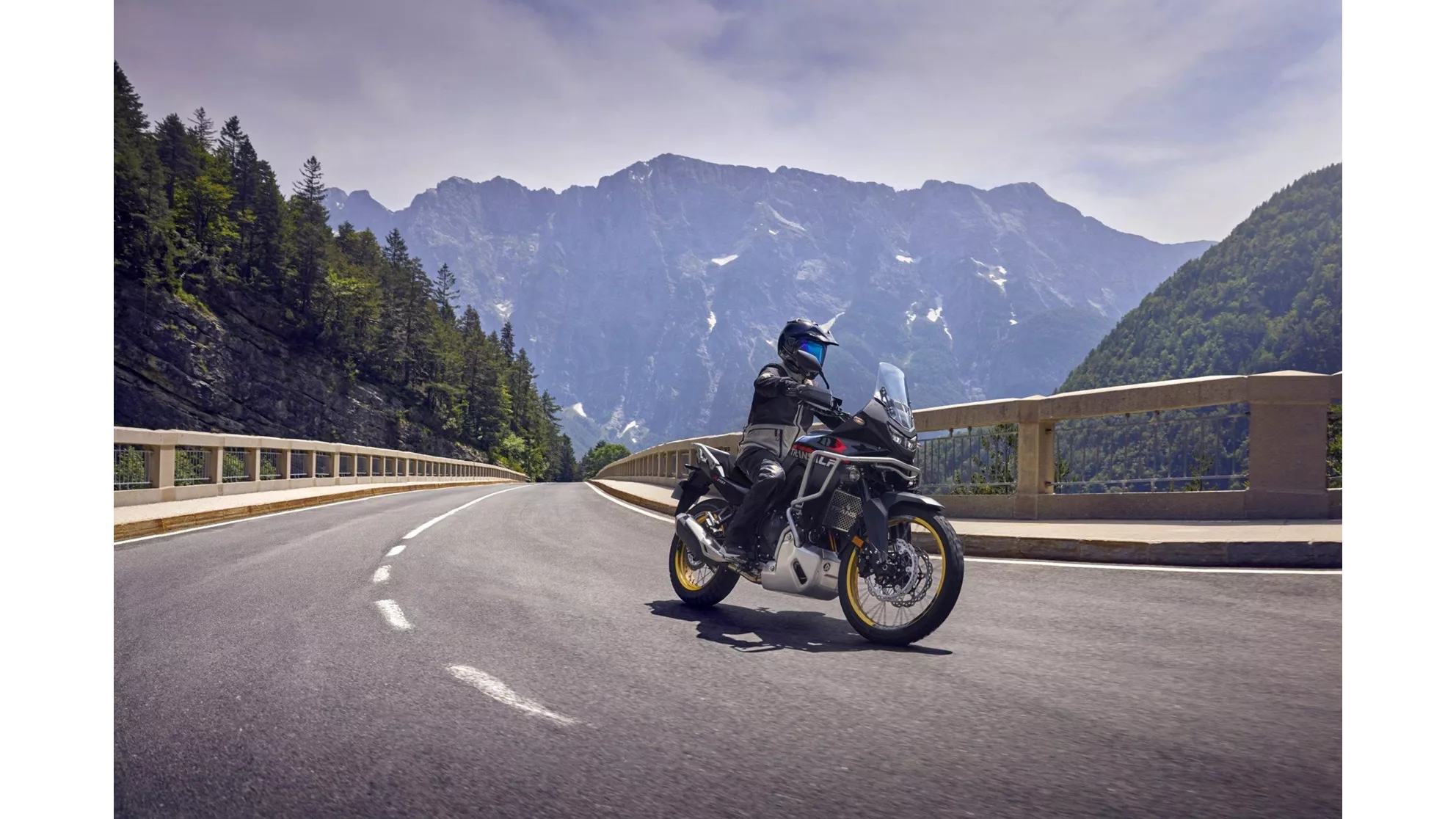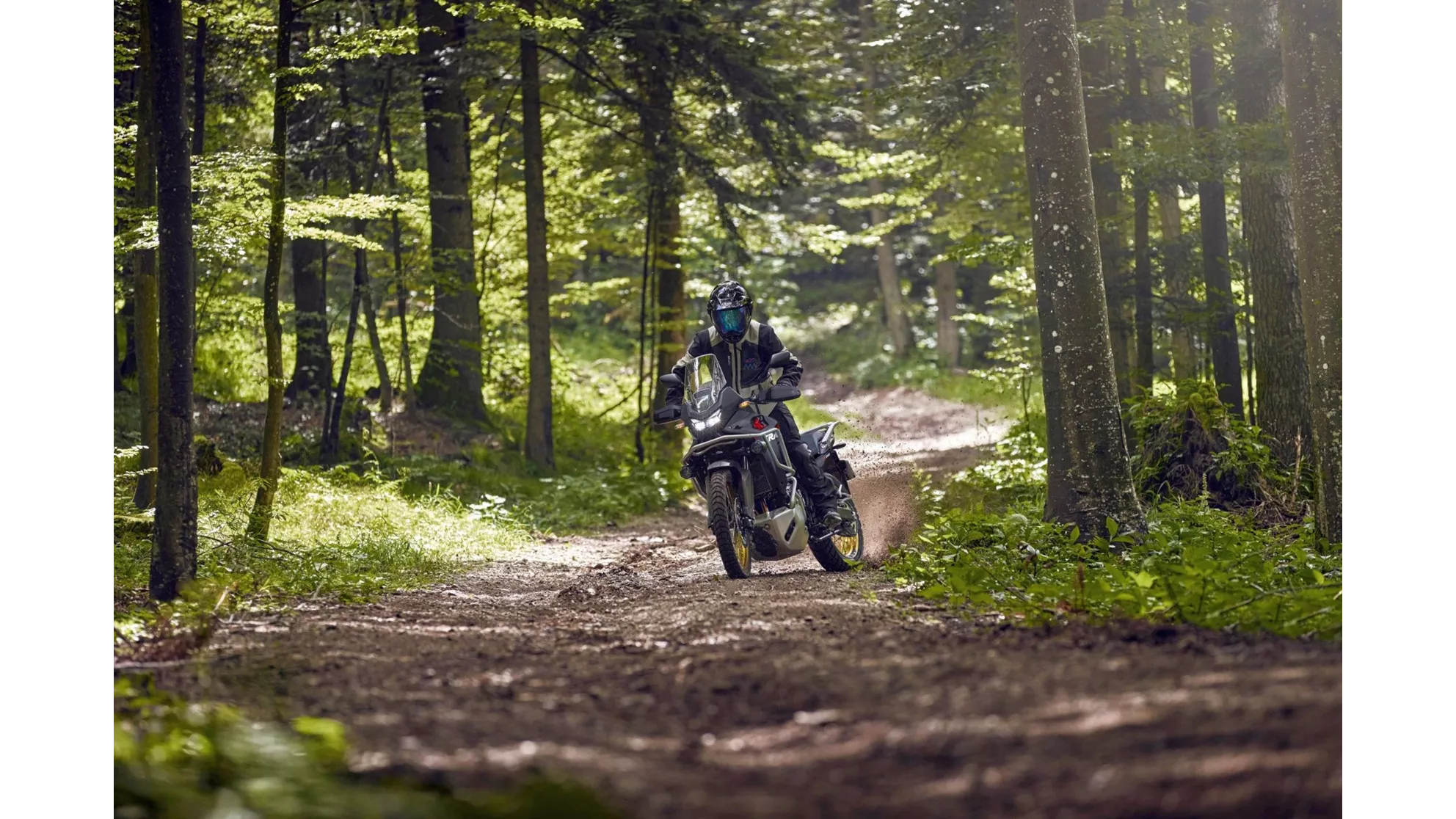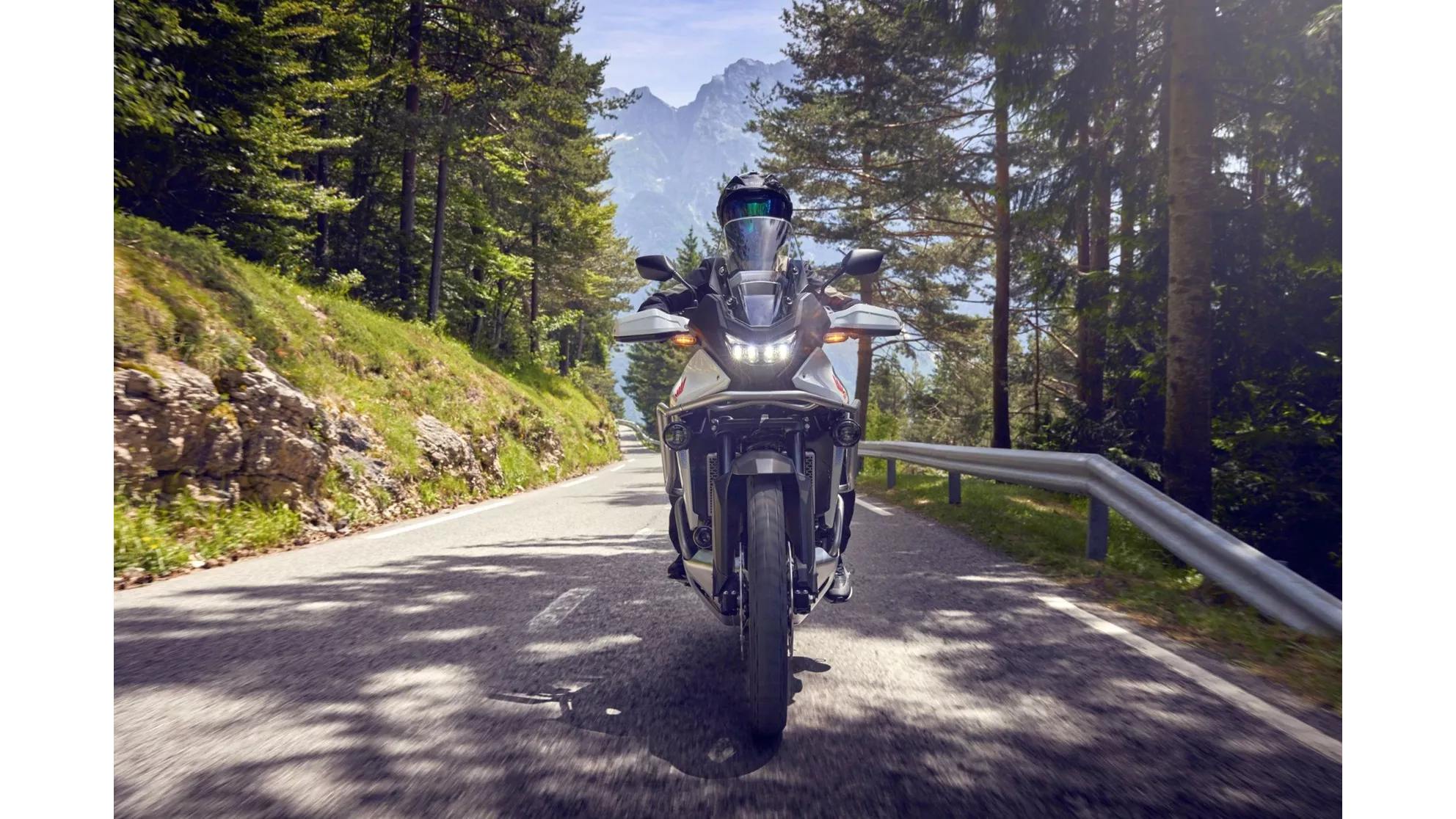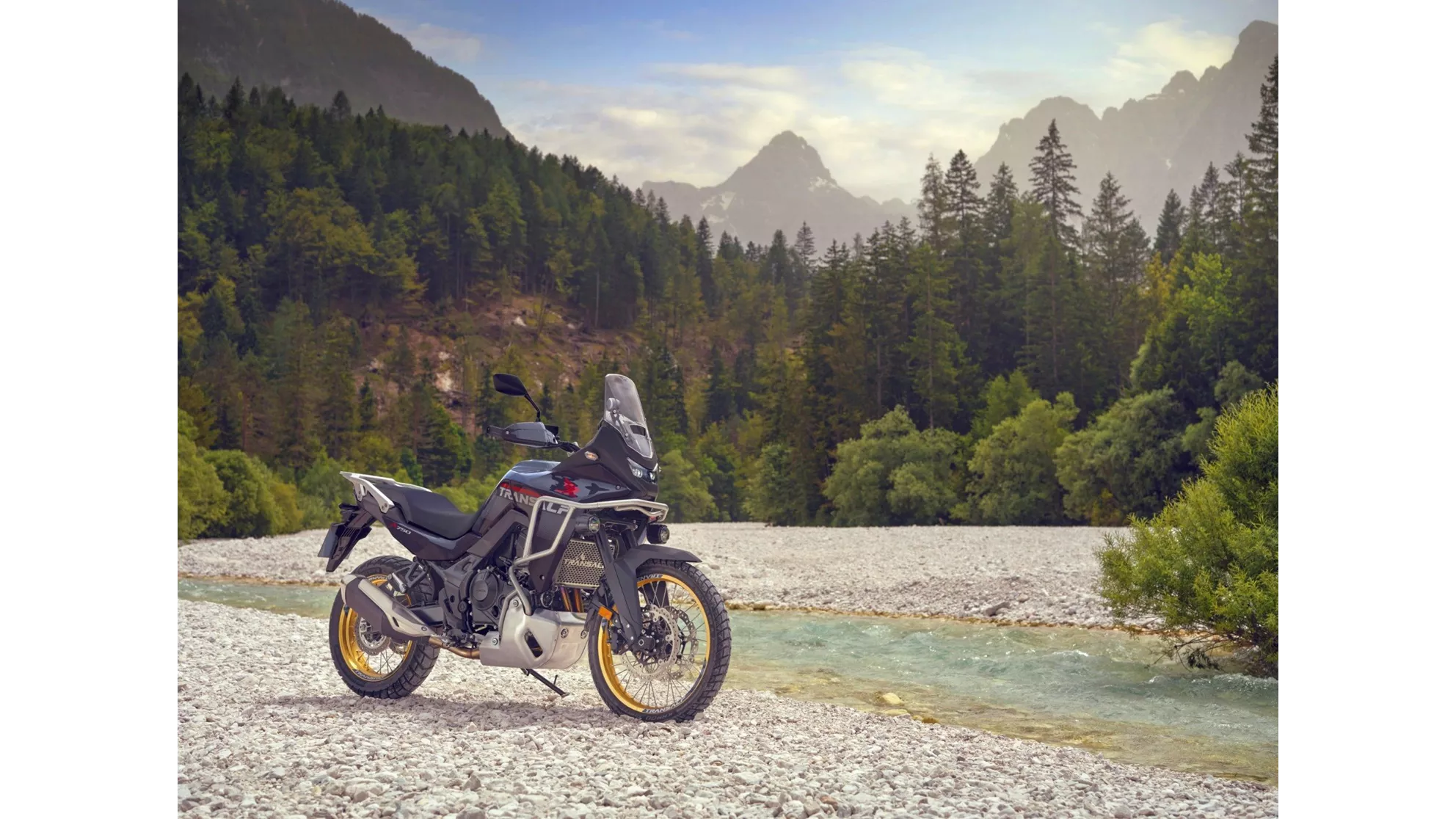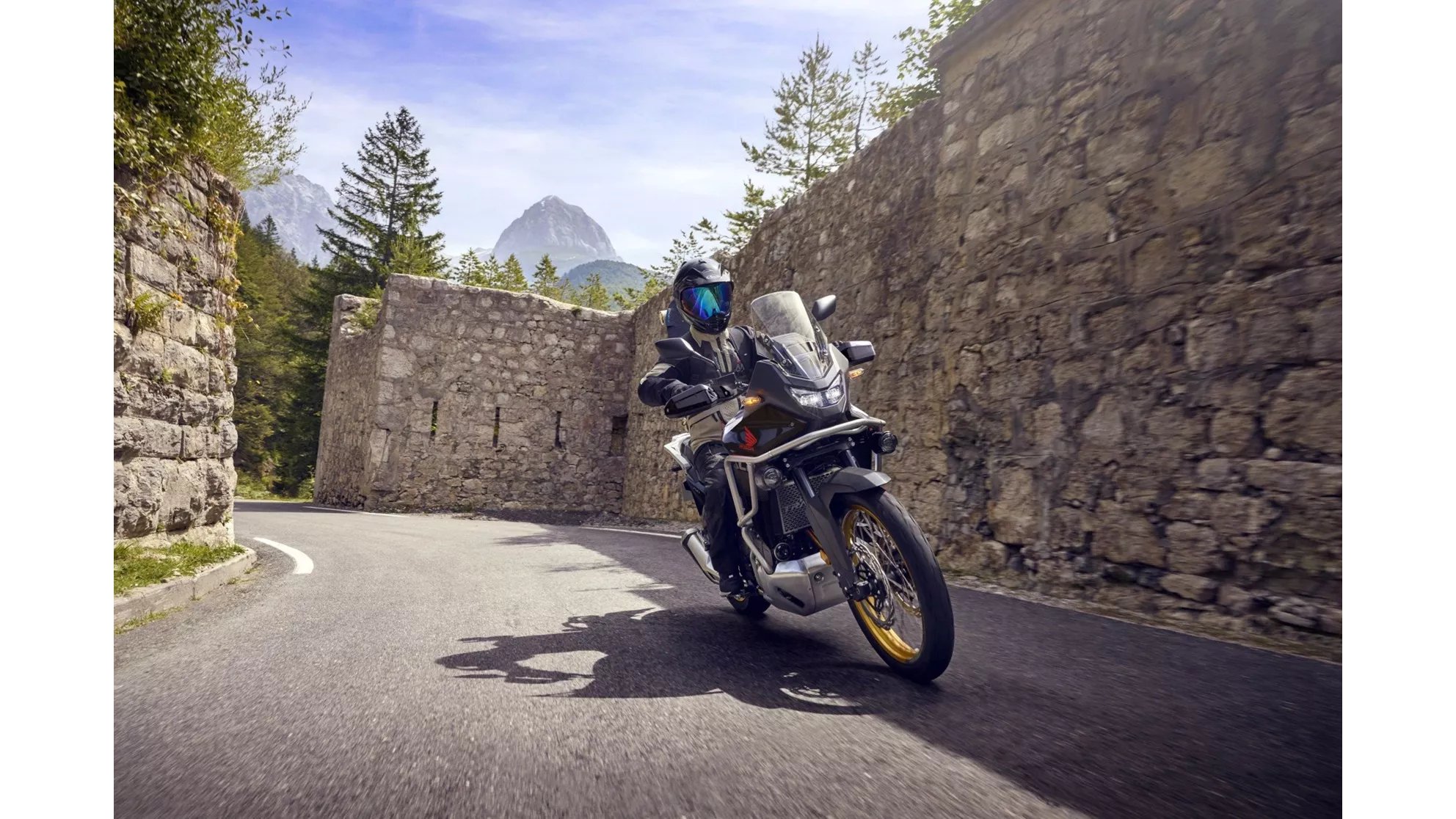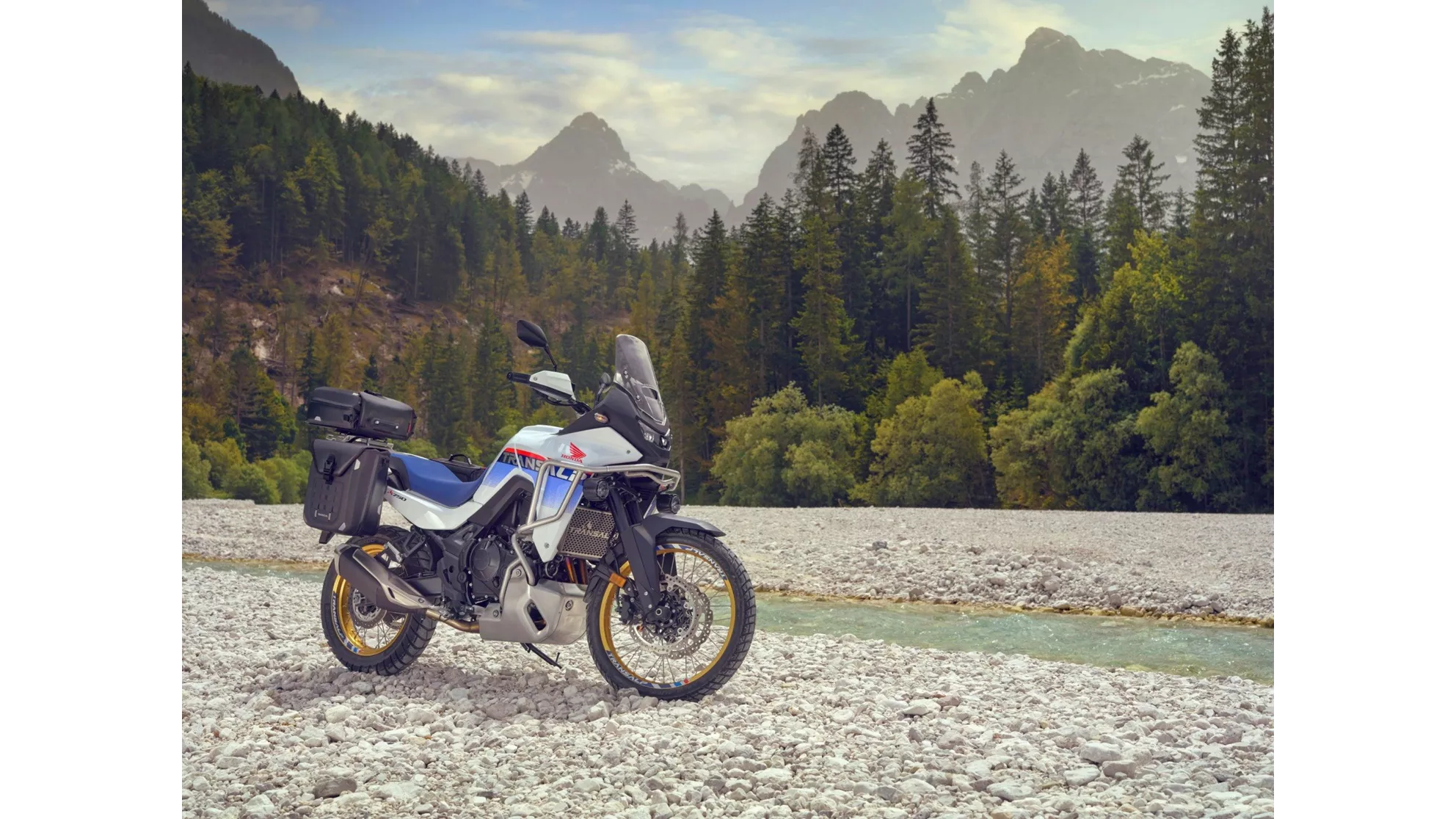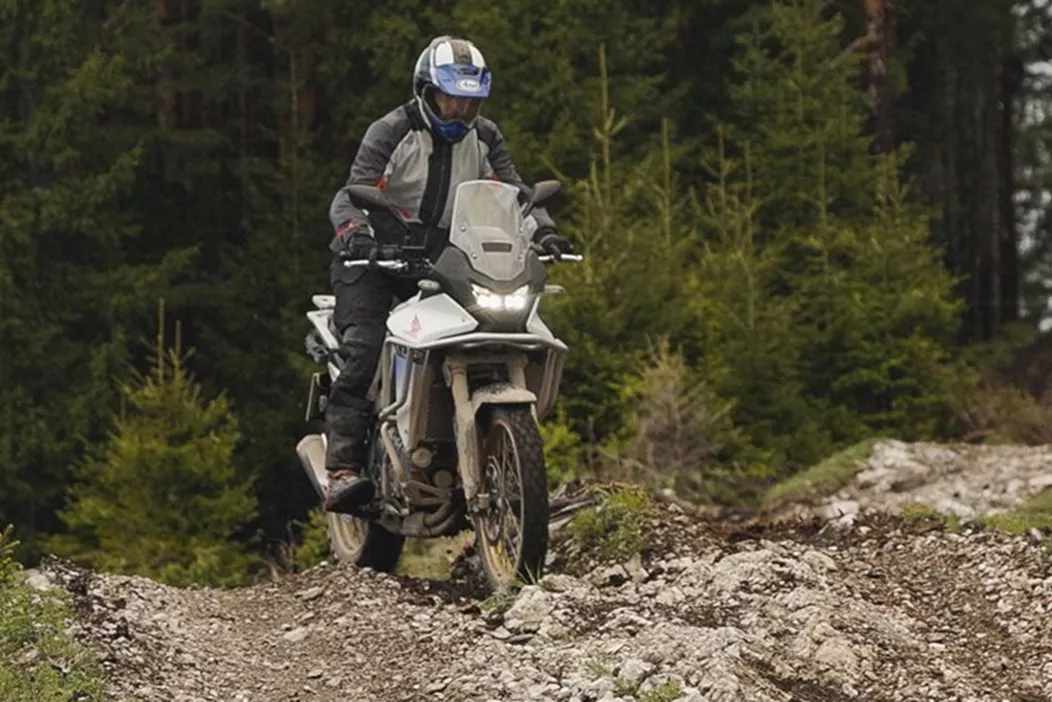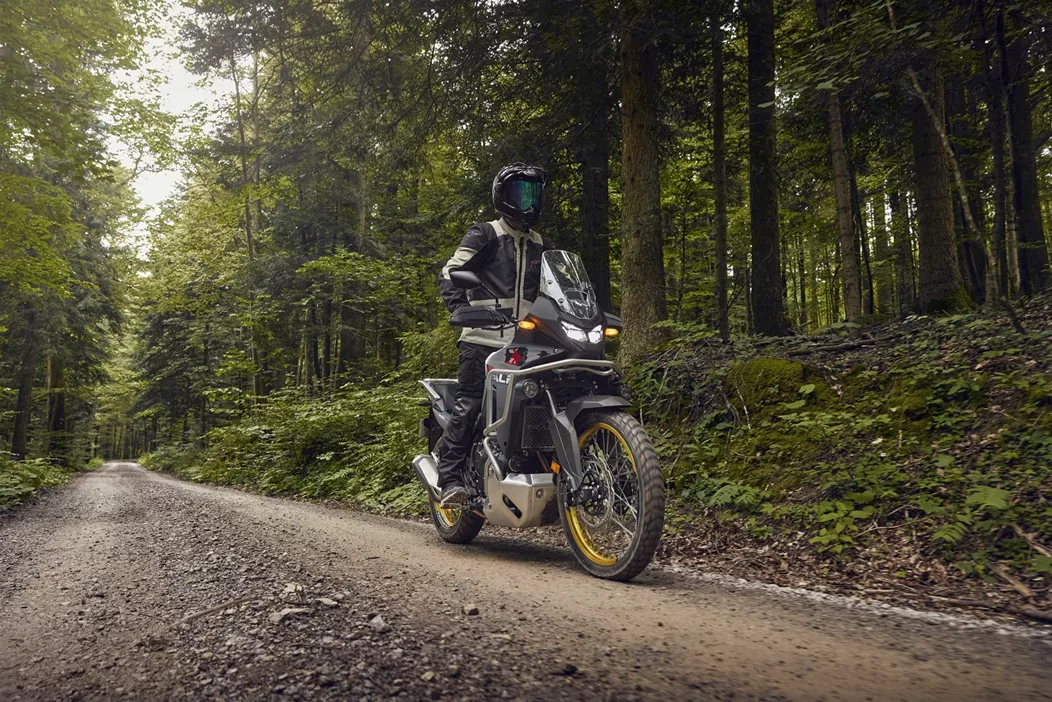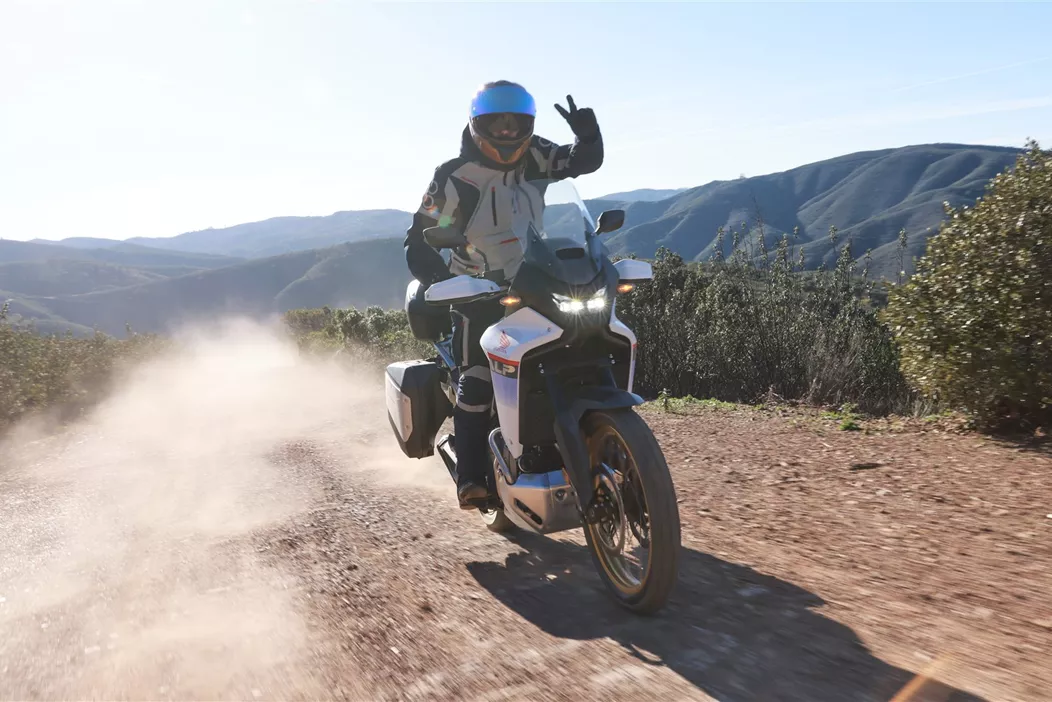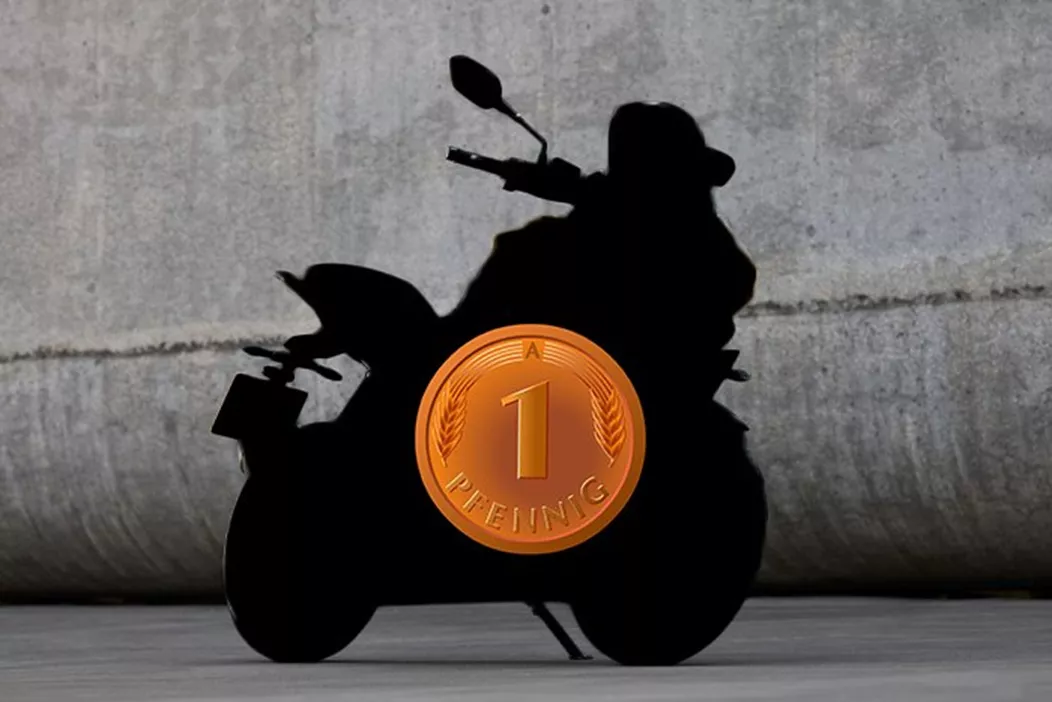Since the first Honda Transalp was introduced in 1986, it has accompanied generations of motorcyclists, particularly adventure riders, and has written countless stories along the way. Production of this popular adventure bike ceased in 2012, so the fanfare was immense when it reappeared in 2023 as the fourth-generation XL750. Now, just two years later, we're already looking at a model update. Externally, it's noticeable with a new front end featuring dual headlights that echo its "big sister," the Africa Twin. Internally, the main changes lie in the revised suspension components.
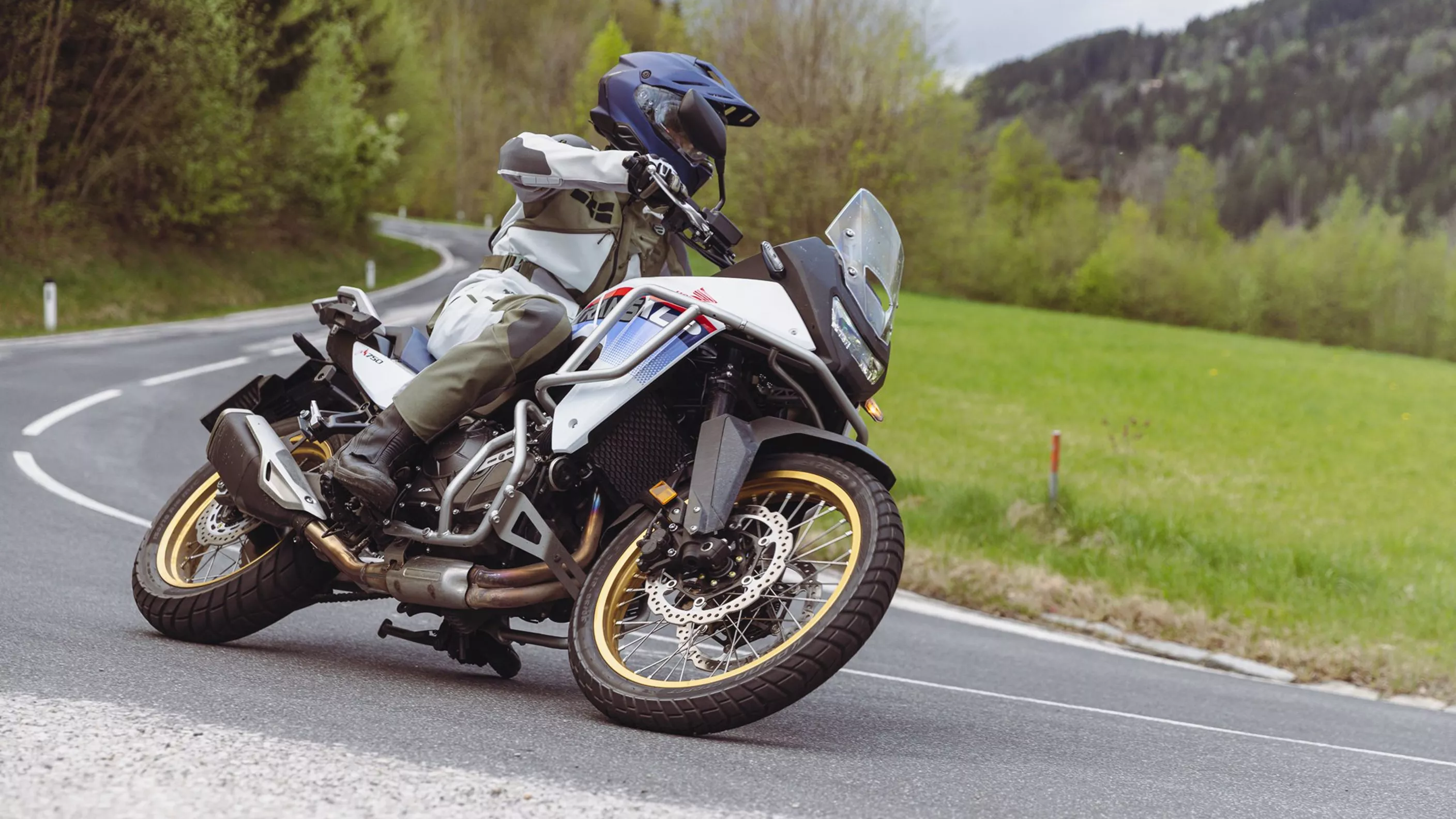
Honda XL750 Transalp Road Test
How Do the 2025 Model Updates Perform in Real-World Riding?
Just two years after its debut, the Honda XL750 Transalp, which carries the weight of its storied legacy, has already received a comprehensive model update. We put it to the test in our mid-range adventure bike comparison on winding roads, taking it through various terrains to reveal how these updates perform.
&width=72&height=72&bgcolor=rgba_39_42_44_0&mode=crop)
wolf
published on 07/05/2025
The New Look Takes Cues from Its "Big Sister" Africa Twin
Noticeable Differences with the New Suspension Tuning
Despite the excitement surrounding the legendary comeback, feedback from customers and testers included criticism that the XL750's suspension was too softly tuned, causing the bike to "cushion" during spirited riding. While comfortable, this limited its versatility. Honda listened to its customers and made significant adjustments to the fine-tuning of the 43mm upside-down fork and Showa shock absorber. The travel remains unchanged at 200mm front and 190mm rear. To put it simply, the rear is now a bit firmer in compression and rebound, while the front is slightly softer, leading to surprisingly noticeable effects in practice. This results not only in better responsiveness on uneven, poor roads but also in increased stability during fast, sweeping turns. Although the Transalp's suspension is still only adjustable for preload, all our testers, regardless of weight class from Gregor to Poky, confirmed the positive impact.
The 92 HP 755cc Parallel-Twin Delivers in All Situations
In combination with the agile 755cc parallel-twin, this means even more riding fun, especially when pushing the limits. The engine, which also powers the CB750 Hornet, provides ample thrust across the entire rev range, making it suitable for both relaxed cruising and aggressive riding. The gearbox shifts with typical Honda precision, and although our test bike wasn't equipped with the optional quickshifter, it's a highly recommended extra to further enhance the Transalp's agility.
Sport Mode Was Our Preferred Choice
In terms of electronics, there are six riding modes available (Rain, Standard, Sport, Gravel, and two fully customizable user modes), each combining throttle response, engine braking, traction control, and ABS to suit specific needs and tailor the riding experience. Honda takes a typically conservative approach, offering a guiding hand in Gravel mode to ensure safe passage through rough terrain, with the four-stage traction control perhaps engaging a bit too early. Riders looking to kick up some dust in the dirt will need to customize one of the user modes to fit their preferences. While a dedicated off-road test is forthcoming, for this review, we stuck to the tarmac. On the road, Sport mode was our preferred choice, perfectly complementing the newly tuned suspension. Unfortunately, Honda continues to omit a cruise control option in 2025, maintaining the separation from the Africa Twin. The Dual Clutch Transmission (DCT) remains exclusive to the larger adventure model.
New TFT Display with Updated Controls
Settings are displayed on a new 5-inch TFT color screen, navigated via a new, fairly compact yet intuitively operated, backlit four-way toggle switch on the left handlebar. The display integrates Honda RoadSync connectivity, enabling the use of Android or iOS smartphones for features like turn-by-turn navigation, emails, calls, music, and weather updates. The indicators now self-cancel, and the Emergency Stop Signal (ESS) function alerts following traffic during unexpected hard braking. Speaking of braking: there's nothing to criticize about the brakes, which, although not the most high-performing by nature, provide good deceleration suitable for the bike's intended use.
Moderate Fuel Consumption Offers 350+ Kilometer Range
Also new is the windscreen made from bio-based Durabio™ plastic, designed to optimize aerodynamics and improve airflow around the rider's helmet. While the Transalp isn't exactly a wind protection marvel, it's certainly adequate for riders under 1.80 meters tall. The seat height is a moderate 850 millimeters for an adventure bike, with ergonomics and seating position being comfortable, even for two-up riding. The seat quality is good, though on really long stretches, you'll eventually need a break. With a range of over 350 kilometers at a test consumption of 4.6 liters, paired with the 17-liter tank, this makes double sense and pleasure. Honda lists the ready-to-ride weight at 210 kilos, but fully fueled and equipped with the sturdy engine guard, our test bike tipped the scales at 222.5 kilos on the unerring 1000PS scale, with a maximum permissible load of 195 kilos.
- How much does a Honda XL750 Transalp cost?
- Here you will find an overview of the price level of new and used motorbikes!
&width=60&height=60&bgcolor=rgba_39_42_44_0&mode=crop)
Honda XL750 Transalp 2025 - Experiences and Expert Review
wolf
In summary, even after its successful model update, the XL750 remains a true Transalp—smooth-running and a comfortable all-rounder. The blend of proven technology, enhanced comfort features, and modern assistance systems makes this bike an appealing companion for both adventure seekers and everyday riders. Whether it's the daily commute through the urban jungle, a spirited after-work ride, or a grand tour that includes unpaved paths, the Transalp is up to the task.
Yamaha Tenere 700, Suzuki V-Strom 800 DE, Aprilia Tuareg 660, KTM 790 Adventure
Honda XL750 Transalp Road Test Images
Source: 1000PS


















































